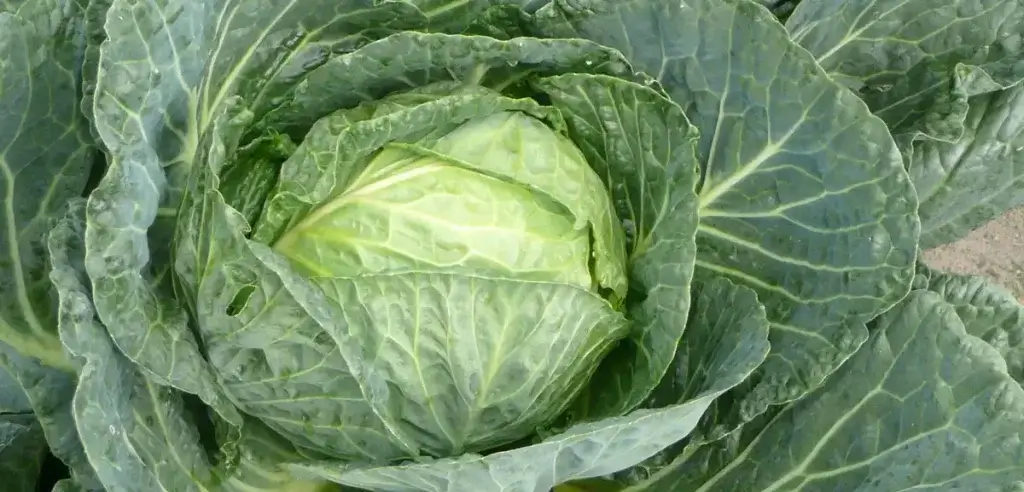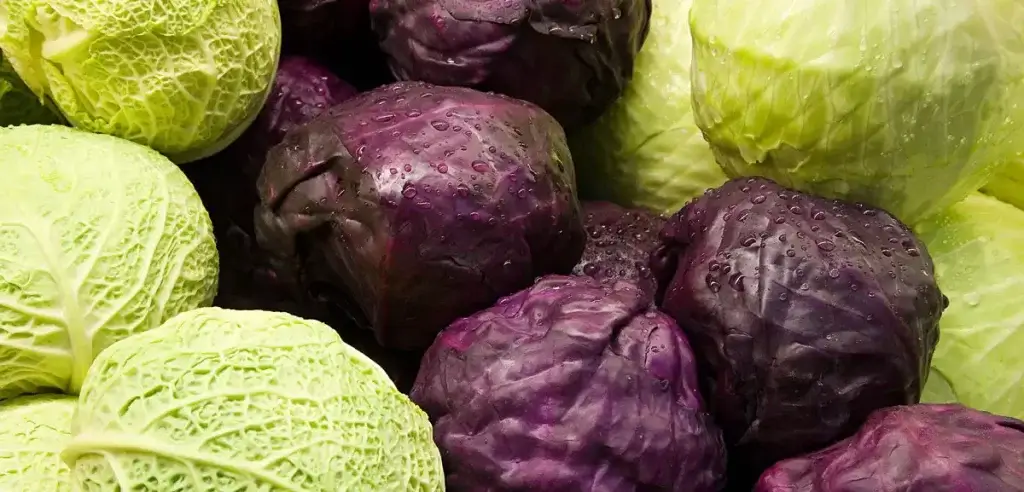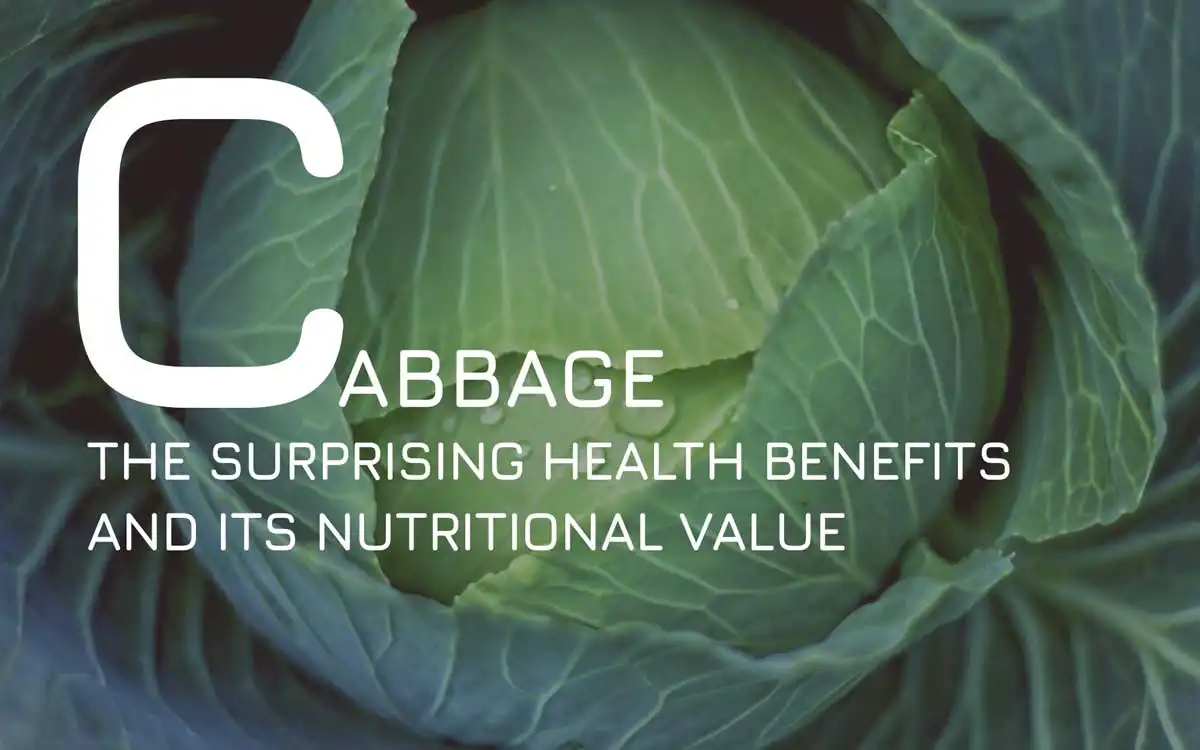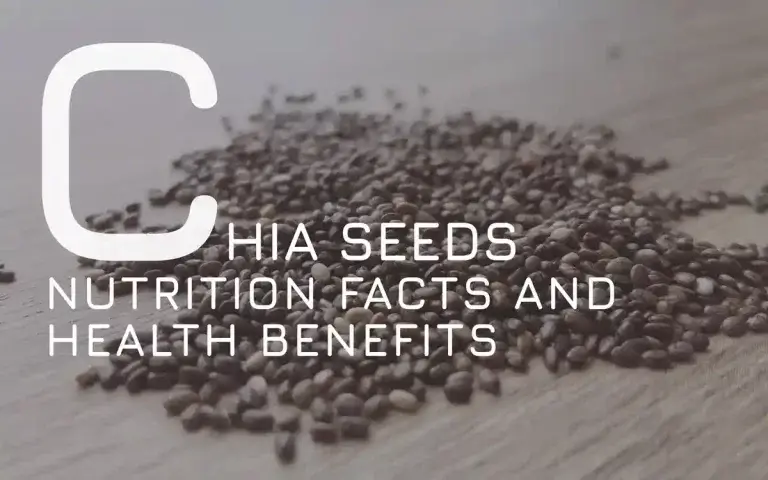The Surprising Health Benefits of Cabbage and Its Nutritional Value
The health benefits of cabbage are many! Cabbage is a cruciferous vegetable that is related to broccoli, kale, and Brussels sprouts. It is low in calories and high in nutritional value. Cabbage benefits, include reducing the risk of cancer, heart disease, and stroke. It is also a good source of fiber, vitamins C and K, and minerals such as potassium and magnesium. In this article, we will discuss the health benefits of cabbage and its nutritional value.
What Is cabbage?
Cabbage is a cool weather crop that belongs to the Brassicaceae family, which also includes broccoli, kale, and Brussels sprouts. The most commonly consumed varieties are green and red cabbage, but there are also white, Savoy, and Chinese cabbages. Cabbage can be eaten raw or cooked, and it is a popular ingredient in coleslaw, sauerkraut, and other dishes.

Cabbage is an excellent source of vitamins C and K, as well as fiber and other nutrients. When selecting cabbage at the grocery store, look for heads that are heavy for their size and have crisp, brightly colored leaves. Avoid cabbages with wilted or yellowing leaves, as well as those with blemishes or brown spots. Cabbage can be stored in the refrigerator for up to two weeks. For the best flavor, consume it within a few days of purchase.
Types of cabbage
There are many different types of cabbage, each with its own unique flavor and texture. One of the most popular varieties is the green cabbage, which has a crisp, crunchy texture and a slightly sweet flavor. Another popular type of cabbage is the red cabbage, which has a deep purple color and a slightly bitter taste.

The Savoy cabbage is another variety that is often used in salads and stir-fries. It has a delicate, tender texture and a milder flavor than other types of cabbage. Finally, the bok choy cabbage is a type of Chinese cabbage that is often used in soups and stir-fries. It has a crunchy texture and a mildly sweet flavor.
Cabbage Nutritional value
Cabbage is a leafy green vegetable that is rich in vitamins and minerals. It is an excellent source of vitamin C, providing over 70% of the recommended daily value in a single serving. Cabbage is also a good source of dietary fiber, iron, and potassium. Furthermore, cabbage is low in calories and fat, making it an ideal food for those looking to lose weight or maintain a healthy weight. While cabbage can be eaten raw, it is often cooked in order to reduce its bitter flavor. When cooked, cabbage becomes more tender and easier to digest. Whether raw or cooked, cabbage is a nutritious addition to any diet.
100 grams of fresh cabbage contain the following nutrients:
- 25 calories
- 5.8 grams carbohydrates
- 0.1 grams fat
- 1.28 grams protein
- 2.5 grams fiber
- 76 micrograms Vitamin K (84% of RDI)
- 36.6 milligrams Vitamin C (48% of RDI)
- 43 micrograms Vitamin B9 – folate (11% of RDI)
- 0.124 milligrams Vitamin B6 (10% of RDI)
- 0.16 milligrams manganese (9% of RDI)
- 170 milligrams potassium (7% of RDI)
- 0.061 milligram Vitamin B1 – thiamin (6% of RDI)
- 0.47 milligrams iron (6% of RDI for men, 3% of RDI for women)
- 0.21 milligrams Vitamin B5 – pantothenic acid (4% of RDI)
- 26 milligrams phosphorus (4% of RDI)
- 0.04 milligrams Vitamin B2 – riboflavin (4% of RDI)
- 12 milligrams magnesium (4% of RDI)
- 40 milligrams calcium (3% of RDI)
- 98 1550 IU Vitamin Α (2% of RDI)
- 0.02 milligrams copper (2% of RDI)
- 0.18 milligrams zinc (2% of RDI)
- 0.23milligrams Vitamin B3 – niacin (2% of RDI)
- 18 milligrams Sodium (1% of RDI)
- 0.3 micrograms Selenium (1% of RDI)
- 0.15 milligrams vitamin E (1% of RDI)
- 42 micrograms Carotene, beta
Health Benefits of cabbage
Cabbage is a leafy green vegetable that is often overlooked but it is actually packed with nutrients and health benefits. Cabbage is an excellent source of Vitamin K and Vitamin C and it also contains a good amount of fiber which helps with digestion. Additionally, cabbage is a low-calorie food so it is a great option if you are trying to watch your weight. Studies have shown that cabbage can help improve bone health and it may also help keep inflammation in check. Furthermore, cabbage is good for your heart and could help lower blood pressure and cholesterol levels. So next time you are at the grocery store, be sure to pick up some cabbage!
1. It is beneficial for your heart
Cabbage is a leafy green vegetable that is rich in vitamins, minerals, and antioxidants. Studies show that cabbage can help to reduce the risk of heart disease by promoting heart health. One of the key compounds in cabbage that helps to promote heart health is anthocyanin. Anthocyanin is a type of flavonoid that has been shown to protect against heart disease by reducing inflammation and improving blood flow. In addition, studies have shown that cabbage can help to lower cholesterol levels and blood pressure. As a result, cabbage can be an important part of a healthy diet for people who are at risk for heart disease.
2. Could help to lower blood pressure
In addition to being low in calories, cabbage is a good source of vitamins and minerals, including potassium. Potassium is a key nutrient for maintaining healthy blood pressure levels. Consuming foods that are high in potassium can help to offset the effects of sodium and lower blood pressure. Eeating just one cup of red cabbage per day can significantly reduce blood pressure levels in the longrun. Therefore, including cabbage in your diet may be a simple and effective way to help keep your blood pressure under control.
3. May lower cholesterol levels
A diet rich in fruits and vegetables has long been linked with lower rates of heart disease, and now a new study suggests that one particular vegetable – cabbage – could help to lower cholesterol levels. Another study, found that participants who ate a diet rich in cruciferous veggies– which include cabbage, broccoli, and kale – had significantly lower levels of LDL (“bad”) cholesterol. The research team believes that the high levels of fiber and antioxidants in cabbage may help to reduce inflammation and prevent the buildup of plaque in the arteries.
Cabbage is rich in soluble fiber, which helps to bind to cholesterol and remove it from the body. In addition, cabbage contains phytosterols, which are plant-based compounds that have been shown to reduce cholesterol levels.
4. It can help improve bone health and blood clotting
One of the many nutrients found in cabbage is vitamin K. Vitamin K is essential for blood clotting and bone health. It is also necessary for the production of proteins that bind calcium in the body. Because of its role in calcium metabolism, vitamin K has been shown to reduce the risk of osteoporosis.
Vitamin K is essential for the production of osteocalcin, a protein involved in bone formation. In addition, cabbage also contains antioxidants that help to protect bones from damage. As a result, regular consumption of cabbage can help to prevent osteoporosis and other degenerative diseases of the bones.
5. It’s a good source of fiber and helps improve digestion
Cabbage is an excellent source of fiber, which is important for digestive health. This vegetable contains both soluble and insoluble fiber, both of which are beneficial for the digestive system. Soluble fiber helps increase the number of beneficial bacteria in the gut, while insoluble fiber helps add bulk to stools and promote regularity. In addition, cabbage is rich in vitamins K and B12, two nutrients that are important for a healthy immune system.
6. Can play a role in reducing inflammation
Inflammation is a necessary bodily response that helps to protect against infection and promote healing. However, when inflammation occurs over a long period of time, it can be detrimental to overall health. Chronic inflammation has been linked to many diseases, such as rheumatoid arthritis, heart disease and bowel disease. Cruciferous vegetables, like cabbage, are rich in antioxidants that have been shown to reduce chronic inflammation. As a result, consuming cabbage may help keep inflammation in check.
7. It’s rich in vitamin C
The humble cabbage may not be the most exciting vegetable, but it is undeniably nutritious. Rich in vitamin C, cabbage provides 48% (per 100grams) of the recommended daily allowance of this essential vitamin. Vitamin C is important for several reasons: it helps the body absorb iron and dietary fiber, repairs damaged skin, and strengthens the immune system.
It is essential for the production of collagen, which provides structure and flexibility to the skin. It is also critical for the proper functioning of bones, muscles, and blood vessels. Vitamin C is a powerful antioxidant that has been researched extensively for its potential cancer-fighting qualities. Free radicals can cause damage to the body that has been linked with chronic diseases such as cancer, and vitamin C works to protect the body from this damage.
8. It’s an excellent low-calorie alternative
Cabbage is a great low-calorie option for those looking to reduce their fat intake. A cup of cooked cabbage has just 34 calories, making it an excellent choice for weight management. Cabbage is also packed with nutrients, making it a healthy option overall. When choosing cabbage as a low-calorie option, be sure to select a variety that is fresh and free of any blemishes. Avoid overcooking cabbage, as this can lead to the loss of some of its nutrients. When prepared correctly, cabbage can be a delicious and healthy addition to any meal.
When it’s Best?
Cabbage is a cool weather vegetable that is best eaten in the fall or winter. The peak season for cabbage is October to February, but it can still be found in stores year-round. Cabbage is a versatile vegetable that can be eaten raw, sauteed, roasted, or cooked into soup.
What to look for when buying cabbage?
When purchasing cabbage, look for heads that are heavy for their size and have crisp, green leaves. Avoid heads that are wilted or have yellowing leaves, as these may indicate that the cabbage is past its prime. In addition, be sure to check for any signs of damage, such as brown spots or bruising.
How to store cabbage?
Cabbage can be kept in the refrigerator for up to two weeks, but it will start to wilt after a few days. For the longest storage life, wrap the cabbage in plastic wrap or place it in a sealed container. If you plan on using the cabbage within a few days, you can store it at room temperature. However, be sure to check it regularly for signs of spoilage, such as wilting leaves or an off-putting smell. With proper storage, you can enjoy fresh cabbage all season long.
Preparing cabbage
To prepare cabbage for cooking, first remove any damaged outer leaves. Cut the cabbage in half, then remove the tough inner core. The cabbage can then be chopped, shredded, or sliced as desired. For best results, cook cabbage soon after cutting it, as extended exposure to air will cause it to turn brown. When cooked properly, cabbage should be tender but not mushy. Boiled, steamed cabbage, sautéed, or used in soups and stews.
How to use cabbage (Recipes)
There are many ways to enjoy cabbage. Here are some recipes to get you started:
Cabbage and Bacon Salad: Start with a base of chopped cabbage. Add crumbled bacon, diced apple, and shredded cheddar cheese. Top with a light dressing of your choice.

Stuffed Cabbage Rolls: Combine cooked ground beef, rice, onion, and garlic. Place a scoop of the mixture in the center of a cabbage leaf and roll it up. Secure with a toothpick if needed. Place the rolls in a baking dish and cover with your favorite tomato sauce. Bake for 30 minutes or until the cabbage is tender.
Cabbage Soup: Start by sautéing chopped onion and garlic in a large pot. Add chopped cabbage, chicken broth, diced tomatoes, and seasonings of your choice. Simmer until the cabbage is cooked to your liking. Serve hot with crusty bread. Enjoy!
Sautéed cabbage: Sauté shredded cabbage in a little oil until it is soft. Season with salt and pepper to taste. Serve as a side dish or add to other recipes such as stir-fries or soups.
Braised cabbage: Braise cabbage by cooking it in a little bit of liquid (such as broth, water, or wine) until it is tender. This method is ideal for cooking tough, mature cabbages. Again, season with salt and pepper to taste. Serve braised cabbage as a side dish or use it in other recipes.
Raw cabbage: Raw cabbage can be used in salads or as a crunchy topping on sandwiches and burgers. Shredded or chopped cabbage can also be used in coleslaws or other dishes where a raw, crunchy vegetable is desired.

Cabbage is an affordable and nutritious vegetable that can be enjoyed in many different ways. Experiment with different recipes to find new ways to enjoy this humble yet delicious ingredient.
Risks and Side Effects
Though generally considered safe, there are some risks and side effects associated with cabbage consumption. Cabbage is a member of the cruciferous vegetable family, which also includes broccoli, kale, and Brussels sprouts. These vegetables contain compounds known as goitrogens, which can interfere with the function of the thyroid gland. For this reason, it’s important for people with thyroid conditions to limit their consumption of cabbage and other cruciferous vegetables.
Additionally, cabbage is a gas-forming food, so it may cause bloating and discomfort in some people. Those who are sensitive to cabbage may also experience headaches or skin rashes. Overall, though cabbage is safe for most people to eat, it’s important to be aware of potential risks and side effects before including it in your diet.
Final Thoughts
In conclusion, cabbage is an extremely healthy vegetable that offers a wide range of health benefits. It is an excellent source of vitamins, minerals, and fiber, and it also contains unique compounds that can help to protect against cancer and other diseases. Cabbage is relatively easy to grow and is very versatile in the kitchen, making it a great addition to any diet. So next time you’re at the grocery store, be sure to pick up a head of cabbage and give it a try!
FAQs
By NutriWins team










